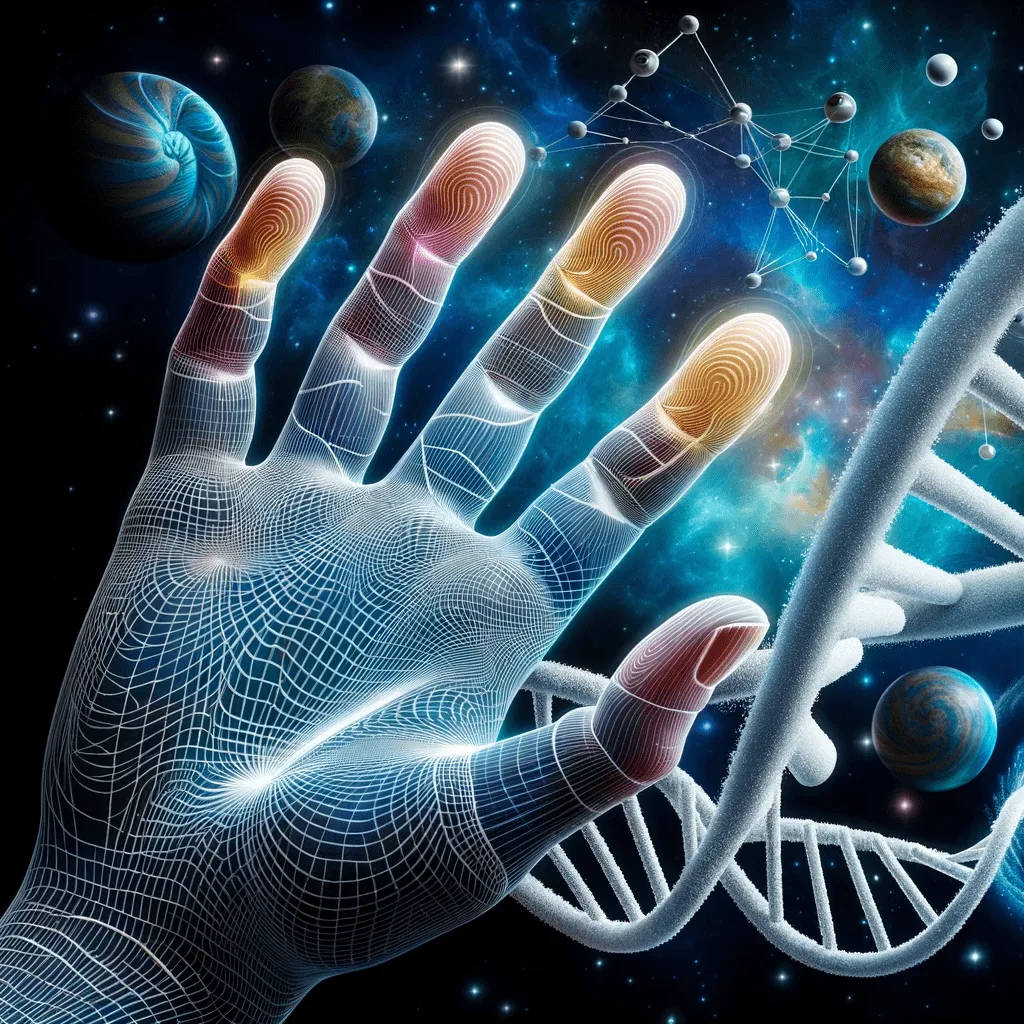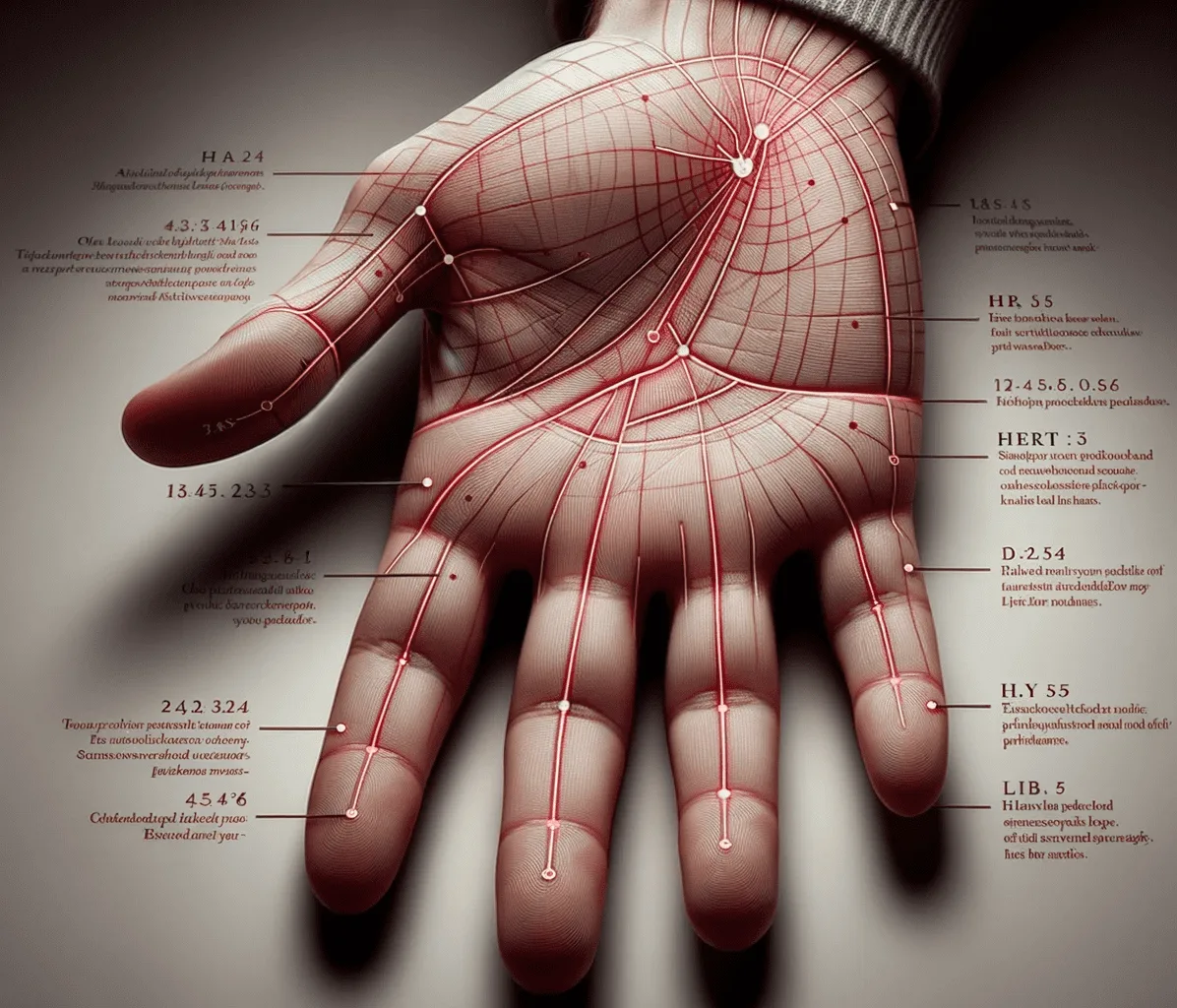
Palmistry & Love: A Scientific Exploration
Palmistry has ancient roots dating back thousands of years. Cultures from the East to the West have relied on palm reading to offer insights into various facets of life, including love. But what does modern science say about these hand patterns and their link to our romantic lives?
article by Nora Pennington
Understanding The Basics
At its core, palmistry revolves around analyzing the lines and formations on our palms. The most discussed when it comes to love is the heart line. Traditionally, this line is believed to provide insight into our emotional states, romantic perspectives, and even potential love life events.
Genetics & Palm Lines
Scientifically speaking, our palm lines are determined during fetal development, specifically during the second trimester of pregnancy. Dermatoglyphics, the study of the patterns of the skin's ridges on our fingers, palms, and feet, indicates that genetics play a significant role in these patterns. However, the direct correlation between these lines and our emotional or romantic propensities remains a topic of debate.
.webp)
The Psychological Aspect
While the formation of palm lines is influenced by genetics, our psychological and emotional states can influence how we interpret or value the insights from a palm reading. If someone believes that a particular bend in their heart line indicates romantic trouble, they might subconsciously act in ways that fulfill that belief, a phenomenon known as the placebo effect.
Studies On Palmistry
Few scientific studies directly explore the validity of palmistry's claims. However, some studies suggest that certain palm features might have broader societal or genetic implications. For instance, the length ratio of the index and ring fingers (known as the 2D:4D ratio) has been associated with prenatal testosterone levels and might have some bearing on personality traits. However, directly linking these findings to the specifics of romantic outcomes in palmistry is a stretch without further evidence.

Personal Belief & Interpretation
The efficacy of palm reading, especially concerning love, is also influenced by personal beliefs. A study in the realm of behavioral science might argue that if an individual strongly believes in the predictions of a palmist, their behavior might align subconsciously to make those predictions come true. It's a self-fulfilling prophecy.

While palmistry has a rich historical background and continues to be popular worldwide, its claims, especially those related to love, are yet to be solidly grounded in science. It operates at the intersection of belief, interpretation, and the human desire to understand the unknown. However, it's essential to approach palm readings with an open mind and a pinch of skepticism, valuing them more for their cultural and historical significance rather than unequivocal scientific fact.
Published: 10/20/2023
Modified: 11/13/2023
More predictions
Come back here soon to learn more about yourself and your future


Who Are The Palm Readers?
Palmistry, a mesmerizing labyrinth of ancient wisdom and symbolism, has captivated humanity with its enigmatic yet deeply personal revelations. Palm readers, often seen as the mediators between cosmic design and earthly experiences, find themselves navigating through this labyrinth, deciphering the cryptic messages inscribed upon our hands


Exploring Hand Analysis: The Truth in Palmistry?
From time immemorial, the mystical art of hand analysis, widely recognized as palmistry, has been a source of both enchantment and perplexity for myriad individuals across the vast expanses of time and geography.


Can Palmistry Reveal Tomorrow's Secrets?
Embarking upon a mystifying journey through the intricacies of palmistry, one finds oneself amidst an ocean of possibilities and pathways.